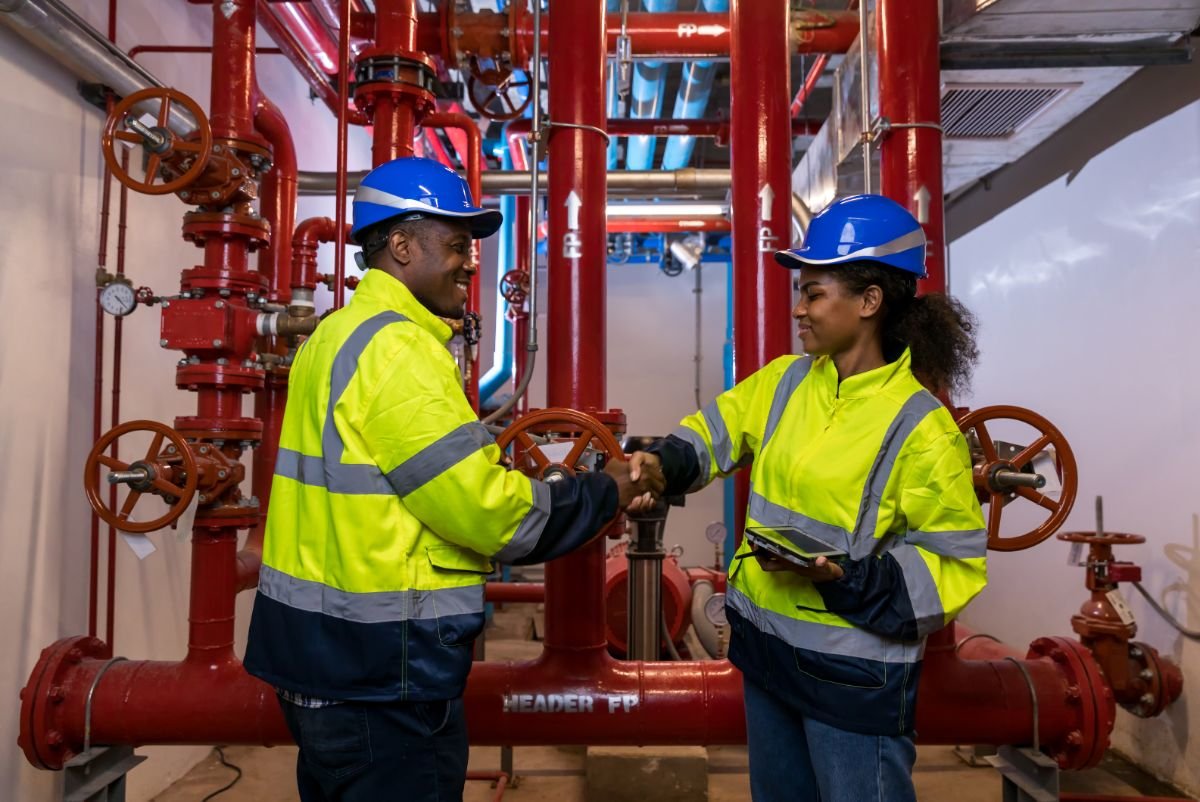Fire hazards pose a serious risk to lives and property. Whether it’s a home, office, industrial facility, or commercial building, having the right fire protection services in place can mean the difference between safety and catastrophe. Comprehensive fire protection services go beyond basic fire extinguishers; they involve prevention, detection, suppression, and emergency response planning.
In this guide, we’ll explore the key components of fire protection services, their importance, and how they can ensure your safety in different environments.
Understanding Fire Protection Services
Fire protection services encompass a wide range of systems and strategies designed to prevent, control, and extinguish fires. These services are generally divided into three main categories:
- Fire Prevention – Measures taken to reduce the risk of fire outbreaks.
- Fire Detection – Systems that alert occupants and authorities to a fire.
- Fire Suppression – Equipment and systems that actively control or extinguish fires.
A comprehensive fire protection plan integrates all three elements to provide maximum safety and minimize damage.
Key Components of Fire Protection Services
1. Fire Risk Assessment
A professional fire risk assessment is the foundation of any effective fire protection strategy. This involves:
- Identifying potential fire hazards
- Evaluating fire risks in specific areas
- Recommending solutions to mitigate risks
- Ensuring compliance with fire safety regulations
A fire risk assessment should be conducted regularly to keep safety measures up to date.
2. Fire Prevention Services
Fire prevention is the first line of defense against fire hazards. Some key prevention strategies include:
- Proper Storage of Flammable Materials – Keeping combustible substances in designated areas.
- Electrical Safety Measures – Regular inspection of wiring and electrical equipment.
- Employee Training – Educating staff on fire safety protocols and emergency procedures.
- Housekeeping Practices – Keeping workspaces free of fire hazards such as clutter and loose wires.
3. Fire Detection Systems
Early detection is crucial in minimizing fire damage and allowing a swift response. Fire detection systems include:
a. Smoke Detectors
Smoke detectors are essential for early fire detection. They sense smoke particles in the air and trigger an alarm to alert occupants.
b. Heat Detectors
These devices detect sudden temperature increases, making them ideal for areas prone to false alarms from smoke, such as kitchens and garages.
c. Fire Alarm Systems
Fire alarms notify building occupants and emergency responders when a fire is detected. These systems may include:
- Manual call points (fire alarm pull stations)
- Voice evacuation systems
- Automatic alerts to fire departments
4. Fire Suppression Systems
Fire suppression systems are designed to contain or extinguish fires before they can spread. Some common types include:
a. Fire Extinguishers
Fire extinguishers are the most basic firefighting tools. Different types include:
- Class A – For wood, paper, and cloth fires
- Class B – For flammable liquids like gasoline
- Class C – For electrical fires
- Class D – For combustible metal fires
- Class K – For kitchen fires involving grease
b. Sprinkler Systems
Automatic sprinkler systems detect heat and spray water to suppress fires. They are highly effective in commercial buildings, hotels, and factories.
c. Fire Suppression Foam Systems
Foam suppression systems are used for flammable liquid fires in industrial settings, such as oil refineries and aircraft hangars.
d. Gas-Based Fire Suppression
These systems use gases like carbon dioxide or FM-200 to extinguish fires without water. They are ideal for data centers, server rooms, and museums.
5. Emergency Exit Planning and Evacuation Procedures
An effective fire protection strategy includes well-planned evacuation procedures. Key elements include:
- Clearly marked and unobstructed emergency exits
- Fire drills and evacuation training
- Emergency lighting for power outages
- Evacuation plans tailored for different types of buildings
6. Firefighter and Emergency Response Coordination
A comprehensive fire protection service ensures collaboration with local fire departments. This may include:
- Providing emergency response plans to local authorities
- Installing firefighter access points in large buildings
- Conducting joint fire drills with emergency responders
Benefits of Comprehensive Fire Protection Services
1. Saves Lives
Fire protection services help prevent injuries and fatalities by providing early warnings, clear evacuation routes, and effective suppression systems.
2. Protects Property and Assets
Fire damage can be financially devastating. Fire suppression systems and early detection devices significantly reduce the extent of damage to buildings, equipment, and valuables.
3. Ensures Legal Compliance
Building codes and fire safety regulations require businesses and residential properties to follow specific fire protection guidelines. Compliance helps avoid fines and legal liabilities.
4. Reduces Insurance Costs
Many insurance companies offer lower premiums for properties with comprehensive fire protection measures in place. Fire-resistant buildings and advanced detection systems reduce risk, leading to potential savings.
5. Minimizes Business Disruption
Fires can halt business operations for weeks or months. Effective fire protection services help ensure business continuity by minimizing damage and downtime.
Choosing the Right Fire Protection Service Provider
When selecting a fire protection company, consider the following:
- Experience and Certification – Ensure they have industry certifications and trained professionals.
- Comprehensive Services – Look for a provider that offers prevention, detection, suppression, and emergency planning.
- Customer Reviews – Check testimonials and reviews to gauge reliability.
- Customization Options – Every building has unique fire risks, so choose a provider that tailors services to your needs.
- 24/7 Monitoring – Consider a company that offers round-the-clock fire alarm monitoring for rapid emergency response.
Final Thoughts
Comprehensive fire protection services are crucial for ensuring safety in homes, workplaces, and industrial environments. By integrating fire prevention, detection, suppression, and emergency planning, you can significantly reduce the risk of fire-related disasters.
Investing in a reliable fire protection service provider not only safeguards lives and property but also ensures legal compliance and business continuity. Don’t wait until disaster strikes—take proactive steps today to implement an effective fire protection plan.










Leave a Reply